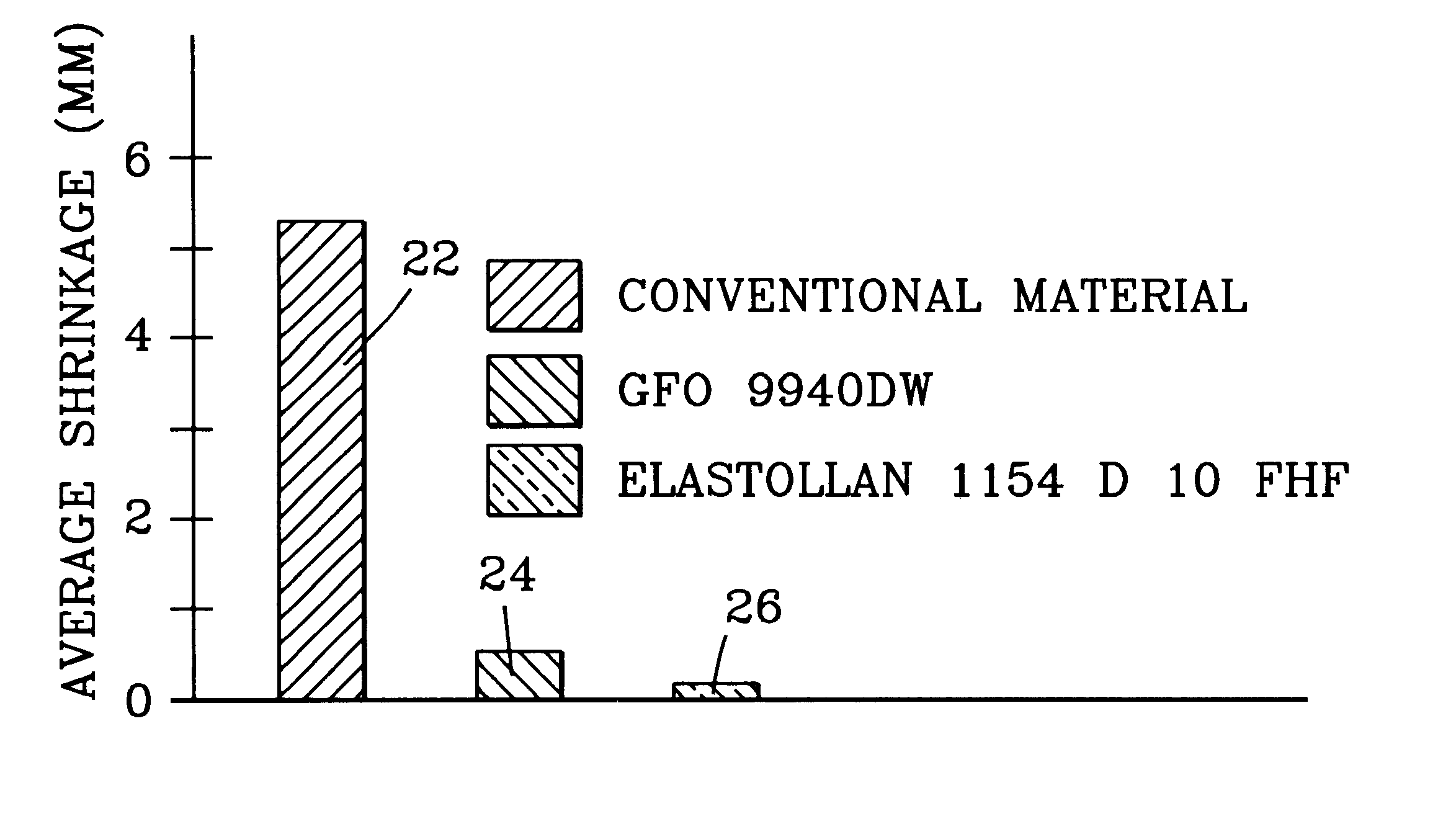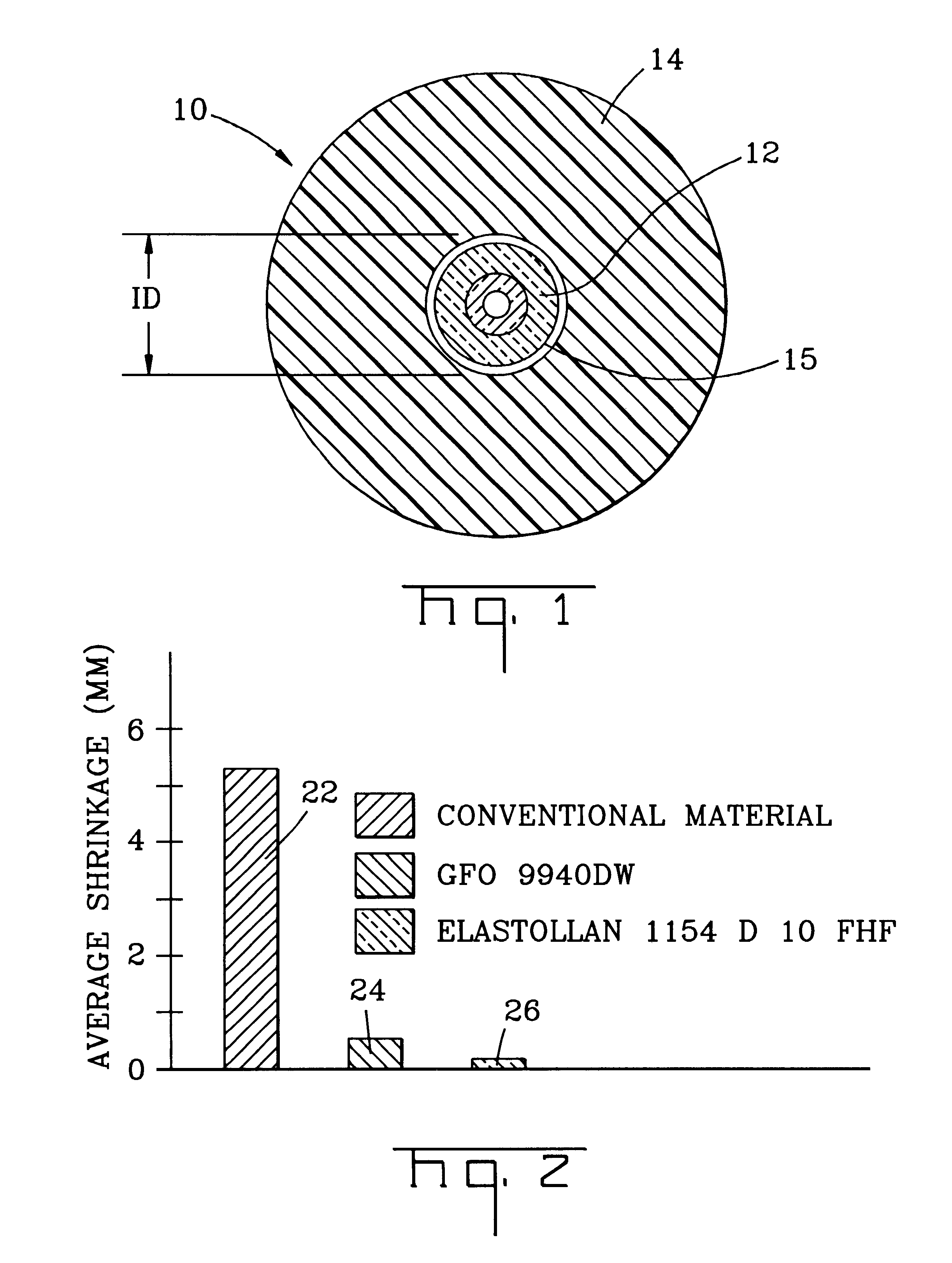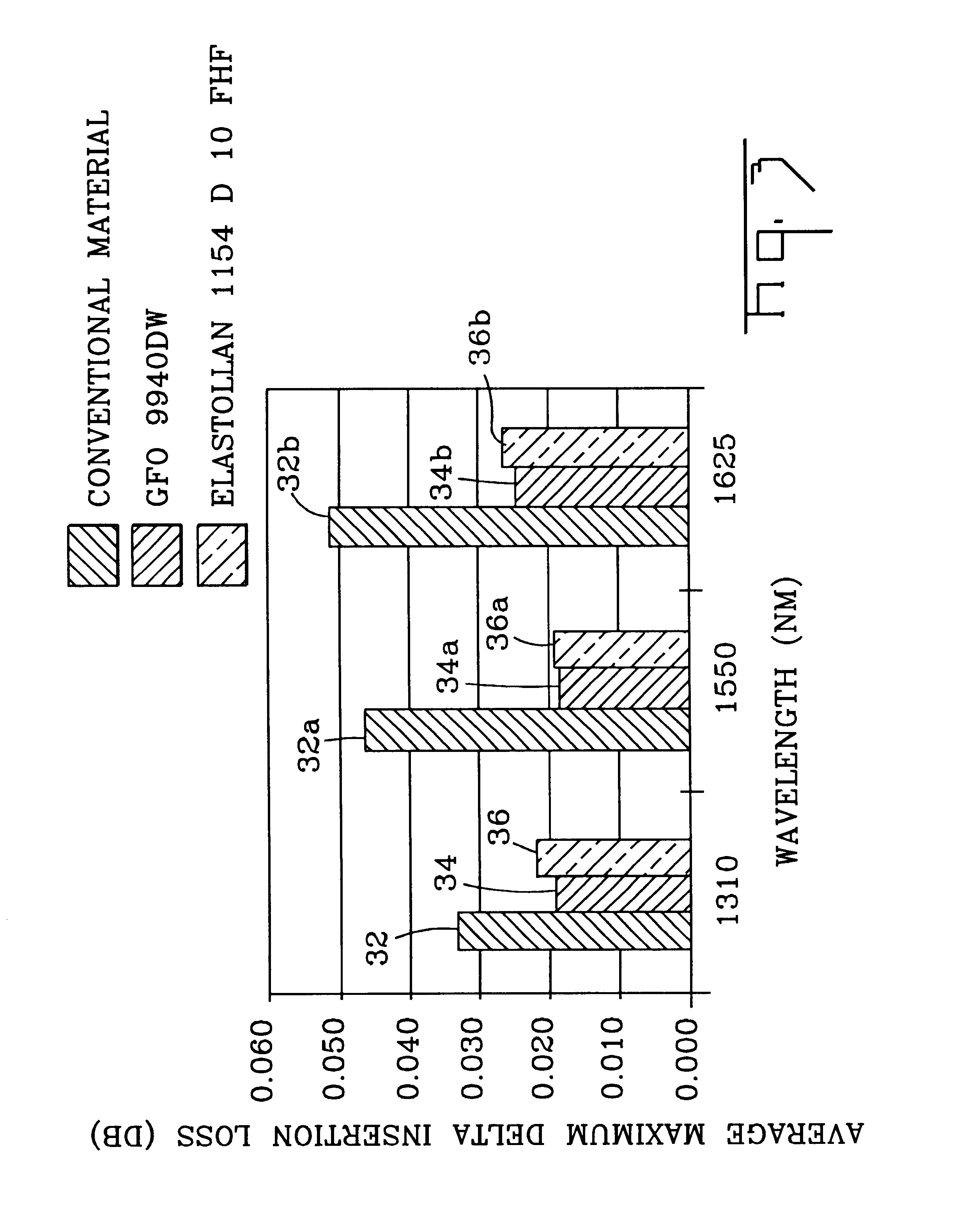Optical fiber having a low-shrink buffer layer and methods of manufacturing the same
a buffer layer and optical fiber technology, applied in the field of optical fibers, can solve the problems of shrinkage of buffering materials, weaker optical signals, and loss of insertions in fiber-to-fiber separation
- Summary
- Abstract
- Description
- Claims
- Application Information
AI Technical Summary
Benefits of technology
Problems solved by technology
Method used
Image
Examples
Embodiment Construction
Referring to FIG. 1, the present inventions will be described with reference to an exemplary buffered optical fiber 10. Buffered optical fiber 10 includes at least one optical fiber 12 having at least one buffer layer 14 therearound. Buffer layer 14 according to the present inventions includes a low-shrink characteristic that preserves optical performance, for example, during temperature variations and / or high humidity environments. A portion of buffer layer 14 can be in contact with the coating on optical fiber 10; however, in other embodiments a suitable substance, for example, interfacial layer 15 can be interposed between buffer layer 14 and an outer coating of optical fiber 12. If used, interfacial layer 15 is generally interposed between optical fiber 12 and buffer layer 14 to promote, for example, size control and / or stripability of buffer layer 14. However, stripability of buffered optical fiber 10 of the present inventions can be achieved when interfacial layer 15 is not pr...
PUM
| Property | Measurement | Unit |
|---|---|---|
| strip force | aaaaa | aaaaa |
| temperature | aaaaa | aaaaa |
| temperature | aaaaa | aaaaa |
Abstract
Description
Claims
Application Information
 Login to View More
Login to View More - R&D
- Intellectual Property
- Life Sciences
- Materials
- Tech Scout
- Unparalleled Data Quality
- Higher Quality Content
- 60% Fewer Hallucinations
Browse by: Latest US Patents, China's latest patents, Technical Efficacy Thesaurus, Application Domain, Technology Topic, Popular Technical Reports.
© 2025 PatSnap. All rights reserved.Legal|Privacy policy|Modern Slavery Act Transparency Statement|Sitemap|About US| Contact US: help@patsnap.com



